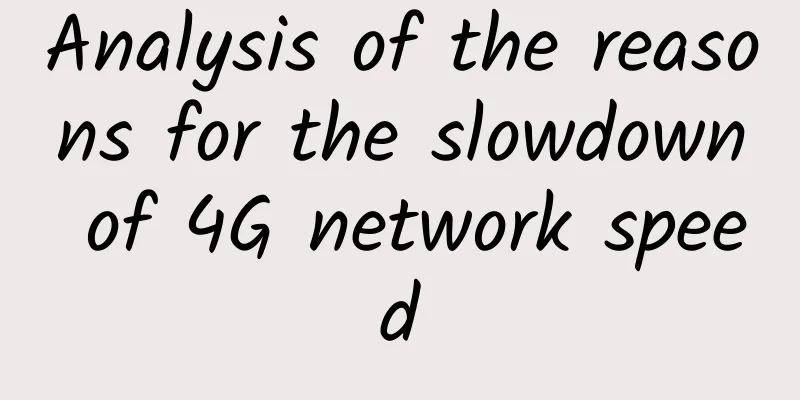If you were asked to design the SSL/TLS protocol

PrefaceSpeaking of network communication protocols, I believe everyone is familiar with TCP and HTTP, which can be said to be the cornerstones of today's Internet communication. However, in terms of network security, they have great security risks:
For this reason, the SSL/TLS protocol came into being. SSL/TLS is a secure communication protocol built on the transport layer and below the application layer. Its main design intention is to eliminate the above-mentioned security risks and ensure network communication security. The HTTPS we are familiar with is built by HTTP + SSL/TLS. It can be said that SSL/TLS is the cornerstone of today's Internet secure communication. So, if you were asked to design the SSL/TLS protocol, how would you design it? This article will introduce how to design a simplified version of SSL/TLS step by step from the designer's perspective. At the end of the article, the working mechanism of TLS 1.2 version will be briefly introduced to help everyone have a deeper understanding of the basic principles of the SSL/TLS protocol. Data encryption based on symmetric encryption algorithmThe risk of eavesdropping is mainly due to the fact that the communicating parties transmit data in plain text on the network, which allows attackers to obtain the content of the communication through simple network packet capture. To solve the risk of eavesdropping, the best way is to encrypt the data. That is, the client encrypts the data before sending it out; after receiving the ciphertext, the server decrypts and restores the data. This can avoid the spread of plaintext on the network, thereby preventing eavesdropping by third-party attackers. When it comes to encryption algorithms, many people first think of symmetric encryption algorithms, which are known for their simplicity and efficiency. Symmetric encryption refers to the use of the same key for both encryption and decryption. Common algorithms include DES, AES, etc. Now, let's try to use a symmetric encryption algorithm to achieve secure communication: The premise of using symmetric key encryption is that both parties in communication must use the same key to encrypt data. There are two main solutions for offline and online key exchange to achieve this goal:
Therefore, simple symmetric encryption cannot meet the requirements of communication security, and we need to continue to optimize... Data encryption based on asymmetric encryption algorithmAsymmetric encryption algorithms refer to encryption and decryption using different keys. These two different keys form a key pair, namely a public key and a private key. The public key is a public key that is available to everyone; the private key is kept confidential. When we use the public key to encrypt data, only the corresponding private key can complete the decryption. Common asymmetric encryption algorithms include RSA, ECC, etc. Now, let's try to use an asymmetric encryption algorithm to achieve secure communication: Through asymmetric encryption algorithms, we can both encrypt data and solve the problem of key exchange, thereby eliminating the risk of eavesdropping. However, the biggest disadvantage of asymmetric encryption algorithms is that the encryption and decryption speed is very slow, which is more than 1,000 times slower than symmetric encryption algorithms. Therefore, asymmetric encryption algorithms are usually only suitable for encrypting small amounts of data. So far, simply using symmetric encryption algorithms or asymmetric encryption algorithms cannot meet the requirements, and further optimization is needed... Data encryption based on symmetric encryption + asymmetric encryption algorithmSince the symmetric encryption algorithm has fast encryption and decryption speed, but there is a problem of key exchange; and the asymmetric encryption algorithm can solve the key exchange problem, but the encryption and decryption speed is slow, then we can combine the two algorithms, that is, encrypt data through the symmetric encryption algorithm, and use the asymmetric encryption algorithm to encrypt the symmetric key when exchanging the symmetric key, to ensure that the key will not be eavesdropped by attackers during network transmission. Now, let's try to use symmetric encryption + asymmetric encryption algorithm to achieve secure communication: By using the solution of symmetric encryption + asymmetric encryption algorithm, we have eliminated the risk of eavesdropping and there will be no encryption and decryption performance issues, but we still cannot eliminate the risk of impersonation. Consider the following scenario:
After this operation, the attacker can obtain the symmetric key without the knowledge of the client and the server. In this scenario, the attacker switches from passive eavesdropping to active impersonation, making the client and the server mistakenly believe that they are communicating with each other. Therefore, we need to find a way for the client to ensure that the public key it receives is sent by the real server, that is, to authenticate the real identity of the "server"... CA certificate-based authenticationDigital Certificate OverviewQuoting the definition from Baidu Encyclopedia: A digital certificate is a digital certification that marks the identity information of the communicating parties in Internet communications. People can use it to identify each other's identities online. A digital certificate is like an ID card in the real world, used to identify the legal identity of a network user (person, company, server, etc.). Just like an ID card must be issued by the public security bureau, a trusted digital certificate must also be issued by an authoritative organization, the Certificate Authority (CA). The digital certificate issued by CA is usually called a CA certificate. A CA certificate mainly contains the applicant's public key, applicant's information, issuing agency CA's information, validity period, certificate serial number and other plain text information. It also contains a CA digital signature. It is the existence of this signature that proves the validity of the certificate. Digital signatures are based on asymmetric encryption algorithms. When issuing a certificate, the CA first uses a specified algorithm (such as the SHA256 algorithm) to calculate a digital summary of the certificate's plain text information, and then uses the CA's private key to encrypt the summary to form a signature. The certificate verification mainly includes the following two parts:
There is not just one organization that issues certificates. For example, organization A can use the root certificate issued by the CA to issue a second-level certificate to organization B; organization B can use the second-level certificate to issue a third-level certificate to organization C, and so on. This is the so-called certificate chain. Use CA certificates to authenticate the identities of both parties in communicationNow, we add the CA certificate to authenticate the identities of both parties: After the CA certificate is introduced, the server's public key is placed in the certificate it provides. When the client verifies the server's certificate, it means that the public key is indeed a legitimate public key from the server. In this way, the subsequent communication process can proceed normally. However, if the symmetric key remains unchanged, an attacker is likely to crack the symmetric key by brute force. Therefore, we also need to make the symmetric key different for each connection... Use random numbers to generate symmetric keysIn order to make the symmetric key different for each connection, we can introduce random numbers to generate the symmetric key to ensure its randomness. However, considering that the random numbers currently generated by computers are all pseudo-random numbers, in order to further improve the randomness, we can achieve this goal by generating multiple random numbers. We can design it like this:
In this way, the key generated by three random numbers can better ensure the randomness of the key and reduce the possibility of being cracked by attackers. Although random number 1 and random number 2 are transmitted in plain text, random number 3 is transmitted in encrypted form, which ensures that it is difficult for attackers to crack the key. So far, we have successfully prevented attackers from eavesdropping on the communication between the client and the server through various means. However, if the attacker does not intend to eavesdrop on the communication but simply wants to cause damage. For example, the attacker intercepts the ClientHello message and changes the random number 1 to the random number 4, which will cause the keys generated by the client and the server to be inconsistent. In this scenario, although the connection has been established, the client and the server cannot communicate normally: To this end, we need a mechanism to verify the correctness of all messages during the connection establishment phase (handshake phase) to prevent the establishment of incorrect connections. Verify the correctness of the handshake messageWe can use digital summaries to verify the correctness of all handshake messages. That is, at the end of the handshake phase, both communicating parties use a hash algorithm (such as SHA256) to calculate a digital summary of all messages they receive and send, and then use the previously negotiated symmetric key to encrypt the digital summary and send it to the other party. When receiving the digital summary ciphertext sent by the other party, first decrypt it with the symmetric key. If the decryption is successful, it means that the key generation is correct. Then compare whether the digital summaries of both parties are consistent. If they are consistent, it means that the message in the handshake phase has not been tampered with, and a correct connection can be established. Up to now, we have basically eliminated the risk of eavesdropping (through data encryption), impersonation (through certificate authentication), and tampering (through digital summaries). However, in order to establish a secure communication channel, we need to go through multiple steps such as message interaction, encryption and decryption, and identity authentication, which has a certain performance loss. Because after a handshake, the key has been negotiated and saved by both parties. The next time a connection is established, the key negotiated in the last handshake can be used, thus avoiding the need to renegotiate the key and improving performance. We need a mechanism to reuse sessions to improve the performance of the protocol... Reusing sessions to improve performanceIn order to use the key negotiated last time, we assign a session ID to each connection.
So far, we have completed the design of a simplified version of the SSL/TLS protocol. The real SSL/TLS protocol is of course not that simple, but the core ideas and basic principles are similar. It’s just that SSL/TLS adds some mechanisms for better security, scalability and ease of use, such as supporting multiple encryption algorithms and using MAC instead of ordinary digital digests to complete integrity verification. Below, we will briefly introduce the working mechanism of the actual SSL/TLS protocol. Overview of SSL/TLS Protocol MechanismThe SSL protocol (Secure Sockets Layer) is the predecessor of the TLS (Transport Layer Security) protocol. Their versions have evolved as follows, and the latest version is TLS 1.3. In this section, we will analyze the most widely used TLS 1.2 version and introduce the basic working mechanism of SSL/TLS. SSL 1.0 version -> SSL 2.0 version -> SSL 3.0 version -> TLS 1.0 version -> TLS 1.1 version -> TLS 1.2 version -> TLS 1.3 version . SSL/TLS Protocol OverviewThe SSL/TLS protocol is located between the transport layer and the application layer in the network protocol stack. It can be divided into two layers, with a total of five sub-protocols: Record ProtocolThe bottom layer Record protocol is responsible for encapsulating the upper layer sub-protocols and providing secure communication capabilities:
Handshake ProtocolThe upper-layer Handshake protocol is used in the handshake phase to provide identity authentication, encryption algorithm and key negotiation capabilities for both communicating parties:
The Handshake protocol includes the following message types: ClientHello, SeverHello, Certificate, ServerKeyExchange, CertificateRequest, ServerHelloDone, ClientKeyExchange, CertificateVerify, ChangeCipherSpec, and Finished. Change Cipher Spec ProtocolThe Change Cipher Spec protocol is also used in the handshake phase. When one party in the communication sends a Change Cipher Spec message, it means that the key has been negotiated and the key will be used for encrypted transmission starting from the next message. Alert ProtocolThe Alert protocol is only used when the connection is abnormal. The Alert message types defined by the current protocol are as follows: close_notify : Indicates that the sender will not send any more messages, which is used to close the connection normally, similar to the FIN message in TCP Application Data ProtocolThe Application Data protocol is used in the communication phase to encapsulate the application layer data, which is then encapsulated by the Record protocol and forwarded through the TCP protocol. SSL/TLS protocol handshake processFirst HandshakeThe client sends a ClientHello message to the server to initiate a connection, which carries the following content:
Second handshake1. The server sends a ServerHello message to the client, which carries the following content:
2. The server sends a Certificate message to the client, which carries the server's certificate. The certificate must be in the x.509 standard format and contain the server's public key, server domain name, issuer information, validity period, and other information. Optional. Sent when the client needs to authenticate the server's identity using a certificate . 3. The server sends a Server Key Exchange message to the client, which carries the security parameters used by the client to generate the premaster secret. Optional, sent when the information carried in the Certificate message cannot support the client to generate a premaster secret . 4. The server sends a CertificateRequest message to the client, requesting the client certificate, which includes the expected certificate type, signature algorithm, and CA list. Optional. Sent when mutual authentication is enabled . 5. The server sends a ServerHelloDone message to the client, indicating that the server has sent all key exchange-related content. The third handshake1. The client sends a Certificate message to the server, which carries the client certificate. Optional, sent when receiving a CertificateRequest message from the server . 2. The client sends a ClientKeyExchange message to the server, which contains the premaster secret (random number) encrypted with the server's public key, which is then used to generate the master secret. 3. The client sends a CertificateVerify message to the server, which contains the digital signatures of all handshake messages between the two communicating parties so far, used to prove that the private key it owns corresponds to the public key in the certificate sent previously. Optional. Sent when sending a Certificate message to the server . 4. The client sends a ChangeCipherSpec message to the server, indicating that encrypted transmission will begin from the next message. 5. The client sends a Finished message to the server, which is encrypted and transmitted, and contains the digital summary of all handshake messages to prevent tampering. The fourth handshake1. The server sends a ChangeCipherSpec message to the client, indicating that encrypted transmission will begin from the next message. 2. The server sends a Finished message to the client, which is encrypted and transmitted. It contains the digital summary of all handshake messages to prevent tampering. at lastThe SSL/TLS protocol is not absolutely secure. It also has many vulnerabilities that are constantly discovered by hackers. Of course, the SSL/TLS protocol is also constantly being improved. The TLS 1.3 version released in 2018 has made many enhancements based on the TLS 1.2 version. For example, in terms of performance, the handshake phase is reduced from 2-RTT to 1-RTT, and supports 0-RTT mode; in terms of security, encrypted transmission begins after the ServerHello message, and some insecure encryption suites are no longer supported (such as static RSA, Diffie-Hellman, etc.). Although TLS 1.3 has changed a lot in terms of mechanism, the basic principles remain the same. Therefore, if we fully understand the principles of the SSL/TLS protocol, we can quickly learn the protocol mechanism no matter how the version evolves. refer toThe Transport Layer Security (TLS) Protocol Version 1.2, RFC 5246 The Transport Layer Security (TLS) Protocol Version 1.3, RFC 8446 Overview of the SSL/TLS protocol operation mechanism, Ruan Yifeng Overview of SSL/TLS Encryption, MicroSoft Document The First Few Milliseconds of an HTTPS Connection, Jeff Moser Why HTTPS requires 7 handshakes and 9 times the delay, for faith programming The authoritative guide to HTTPS, by Yang Yang, Li Zhenyu, etc. Digital certificate, Baidu Encyclopedia |
<<: 3G, 4G, 5G, why do we need so many "Gs"?
>>: Privileged Access Management: The Future of Cyber Resilience
Recommend
20% off on all Ouluyun VPS, starting from $3.2/month for Los Angeles CN2 GIA/Hong Kong CN2 GIA lines
EuroCloud was established in 2021 and registered ...
SolidSeoVPS: $10/year-1GB/15G NVMe/500GB@10Gbps/Tampa
SolidSeoVPS was founded in 2013 and is a foreign ...
From CDN to edge computing, computing power evolution accelerates again
The COVID-19 pandemic has accelerated the global ...
Say hello politely - TCP protocol three-way handshake
The Art of Communication What is the most basic a...
Learn how to restore IP address in one article!
[[426350]] Recover IP address Given a string cont...
Interpreting the four major reasons why my country is comprehensively promoting the implementation of IPv6!
In November 2017, the General Office of the CPC C...
The difference between SDN and traditional network operation and maintenance
1. Pain points of traditional network operation a...
#Has run away#Limewave: $20/year-AMD Ryzen 5950X/1GB/10G SSD/1TB/Seattle
【Attention】This merchant has run away!!! Limewave...
China's communications industry is working together to accelerate the layout of the 5G era
[[182606]] In the discussion of 5G short code sol...
Tingyun launches five major weapons to realize complete DEM functions first in the country
Historical data has shown that performance has a ...
New wireless broadband technologies in the 5G era
After the arrival of the 5G era, wireless broadba...
How much does data center downtime cost?
Data center downtime is unbearable for any enterp...
Introduction to Virtual Switch Technology and Practical Applications in IP Metropolitan Area Networks
With the continuous development of information te...
BuyVM: 1Gbps unlimited traffic KVM starts at as low as $2/month, 256GB disk starts at only $1.25/month
BuyVM is a foreign hosting company founded in 201...
With the handshake of 5G, intelligent transportation will usher in four major qualitative changes!
At present, for any ToB market, 5G+AI is creating...









